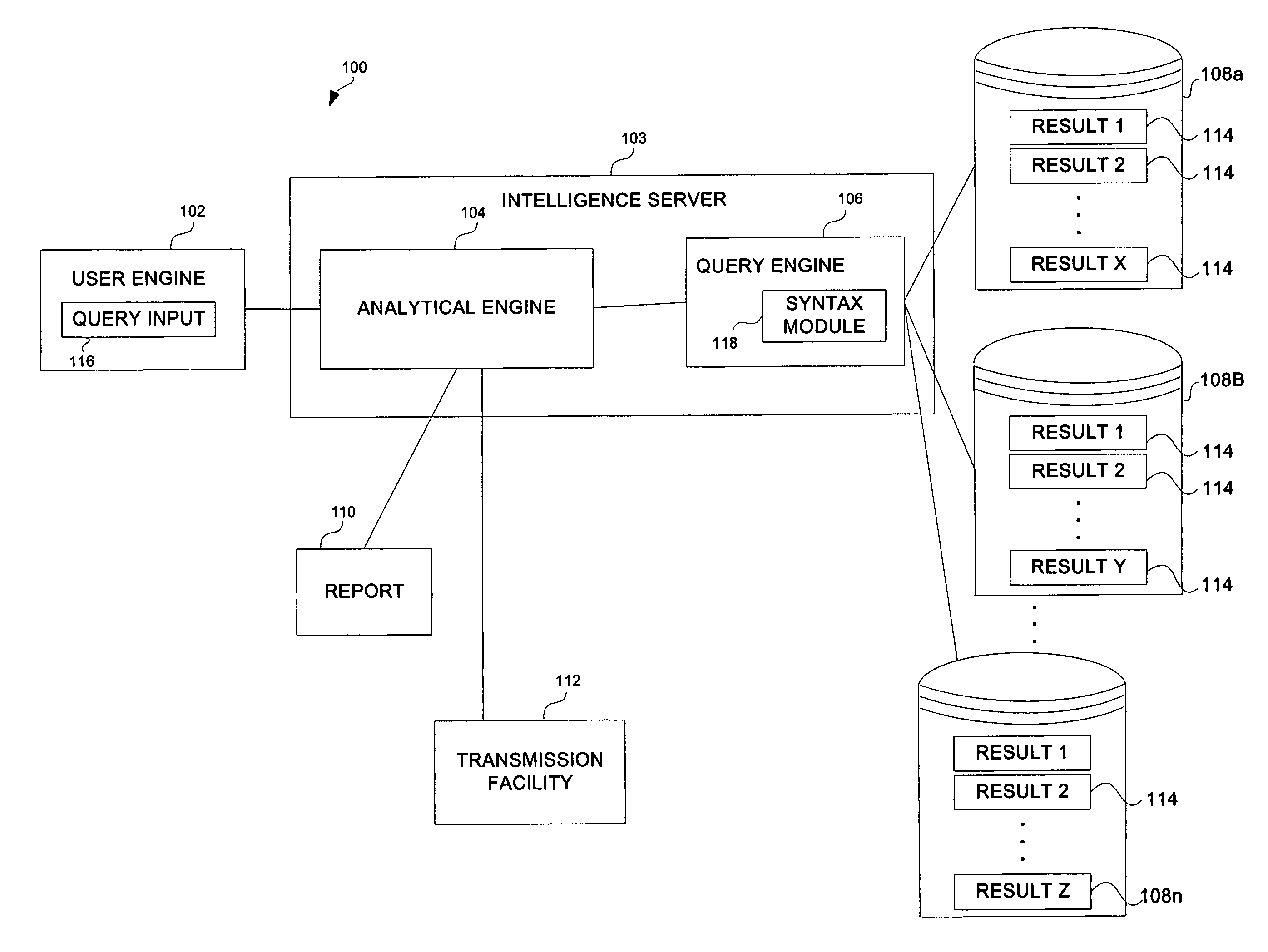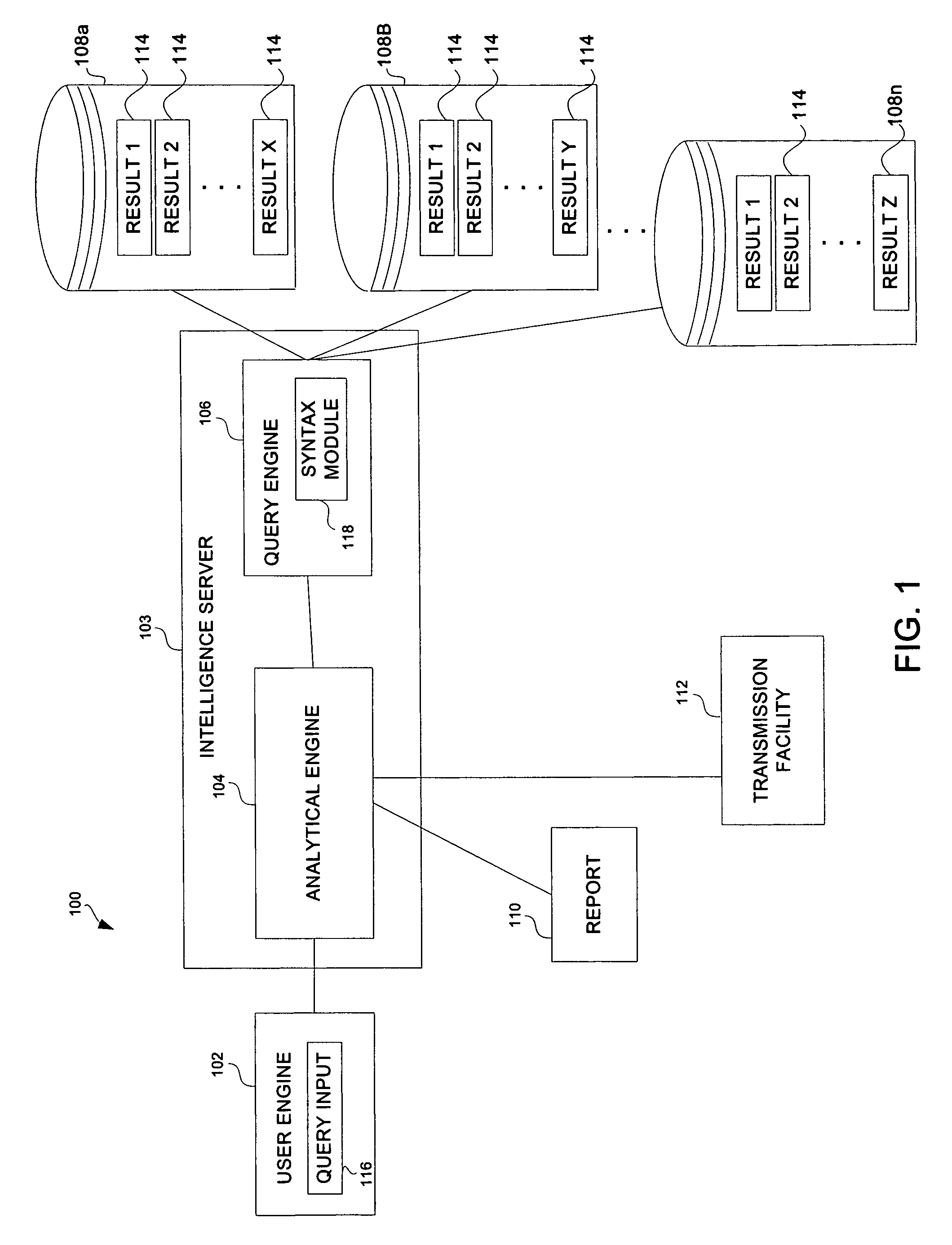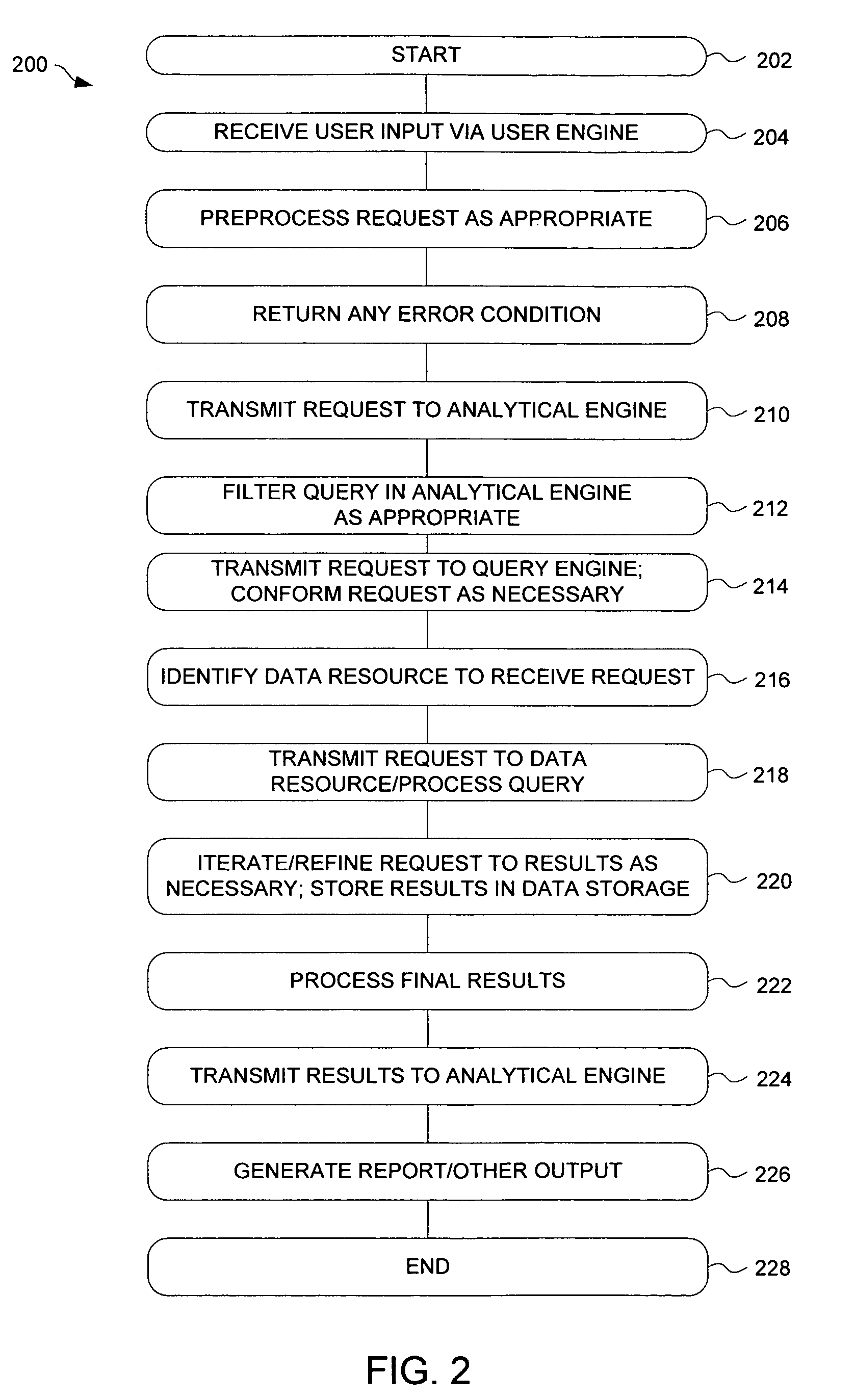Report system and method using context-sensitive prompt objects
- Summary
- Abstract
- Description
- Claims
- Application Information
AI Technical Summary
Benefits of technology
Problems solved by technology
Method used
Image
Examples
Embodiment Construction
[0038] The present invention provides prompt objects for use in resolving reports in a reporting system, decision support system, business intelligence or OLAP system. An embodiment of an architecture for processing reports in which this invention may be used is provided in FIGS. 1 and 2 which are described below.
[0039] Throughout the specification, an embodiment of prompt objects used to prompt a user connected to a reporting system using a client-server architecture is provided. It should be appreciated that the present invention is also applicable to a system in which a user connects to a reporting system server through a web interface, telephone interface, report requesting system with reports automatically delivered to the user or some other interface. MicroStrategy's Narrowcaster, Telecaster, and Web systems may be used, for example.
[0040]FIG. 1 is a block diagram illustrating a system 100 by which a variety of data resources may be accessed for business analytic, report gen...
PUM
 Login to View More
Login to View More Abstract
Description
Claims
Application Information
 Login to View More
Login to View More - R&D
- Intellectual Property
- Life Sciences
- Materials
- Tech Scout
- Unparalleled Data Quality
- Higher Quality Content
- 60% Fewer Hallucinations
Browse by: Latest US Patents, China's latest patents, Technical Efficacy Thesaurus, Application Domain, Technology Topic, Popular Technical Reports.
© 2025 PatSnap. All rights reserved.Legal|Privacy policy|Modern Slavery Act Transparency Statement|Sitemap|About US| Contact US: help@patsnap.com



